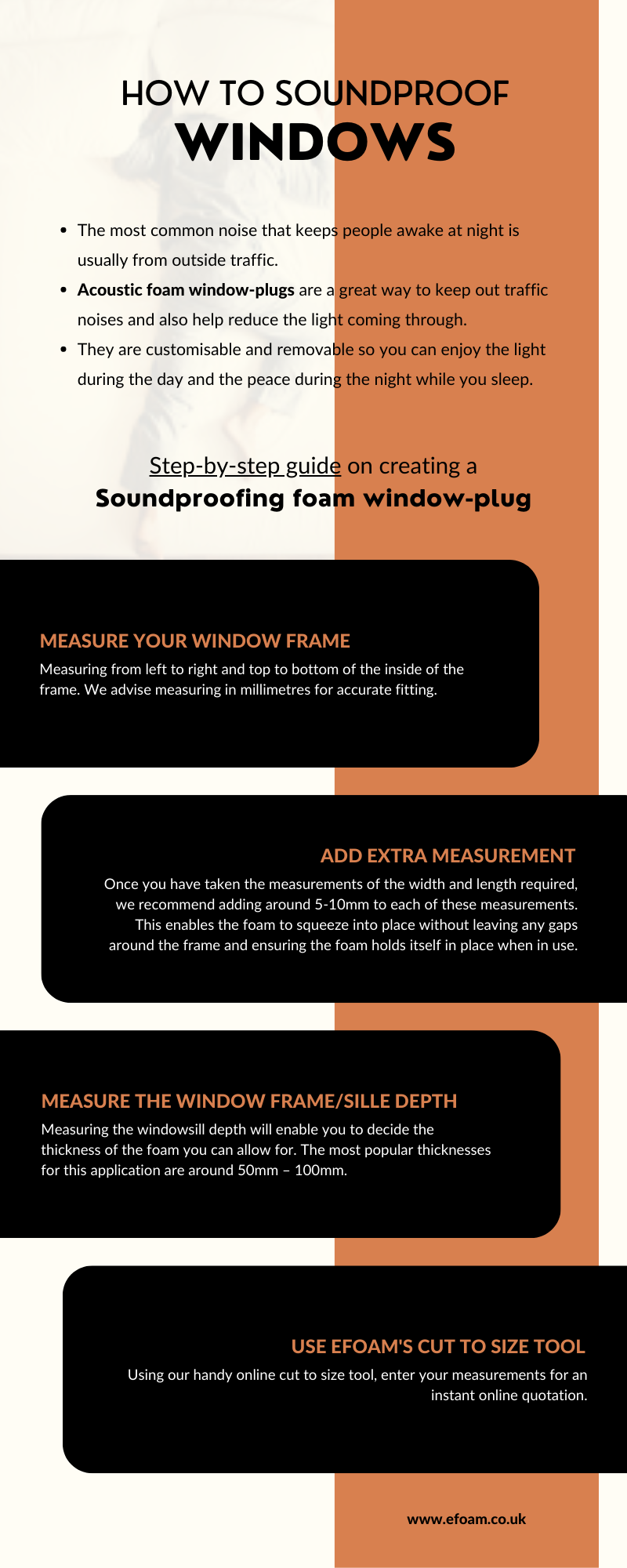
How to soundproof windows using Acoustic Foam Window Plugs
Learn how to reduce noise from windows by creating a soundproofing foam window plug

After a long day of busy schedules we find ourselves in during our everyday lives, a peaceful night’s sleep is of paramount importance. Not being able to sleep due to noises can be frustrating, to say the least. There are, however, many effective ways to reduce noises that stop you from sleeping.
While earplugs are known for their effectiveness in helping reduce noises inside the home whilst you sleep, such as a snoring partner, they have been found by some to be quite uncomfortable to wear. They can also prevent you from hearing noises inside the home, such as a smoke alarm or even an alarm clock.
The most common noise that keeps people awake at night is usually from outside traffic. At eFoam, we provide Acoustic foam cut to size, which is fantastic for reducing the level of external noise. This is known as a ‘Window Plug’.
Acoustic window-plugs are a great way to keep out traffic noises and also help reduce the light coming through, this can be useful should you wish to take a nap during the day or during the Summer months where it is lighter much earlier on in the mornings. Another benefit of an Acoustic foam window-plug is that they are customizable and removable so you can enjoy the light during the day and the peace during the night while you sleep.

Here is how to make your windows soundproof. Create a soundproofing foam window plug using our simple step by step guide below:
Step 1 – Measure your window frame; Measuring from left to right and top to bottom of the inside of the frame. We advise measuring in millimetres for accurate fitting.
Step 2 – Once you have taken the measurements of the width and length required, we recommend adding around 5-10mm to each of these measurements. This enables the foam to squeeze into place without leaving any gaps around the frame and ensuring the foam holds itself in place when in use.
Step 3 – Measure the depth of the window frame/sill. Measuring the windowsill depth will enable you to decide the thickness of the foam you can allow for. The most popular thicknesses for this application are around 50mm – 100mm.
Step 4 – Using our handy online cut to size tool, enter your measurements for an instant online quotation.
Acoustic foam is a versatile and affordable solution for many noise-related issues, not just recording studios. Take a look at our many other blogs related to Acoustic foam and its wide range of uses.
Should you wish to discuss your soundproofing requirements, please contact one of our friendly experts today.


